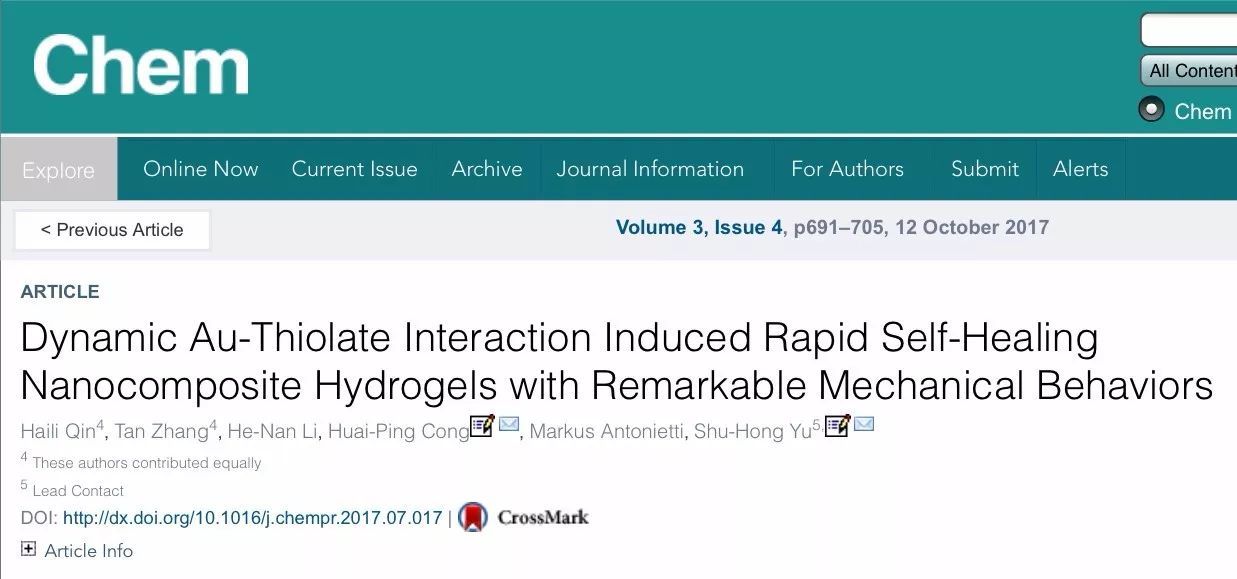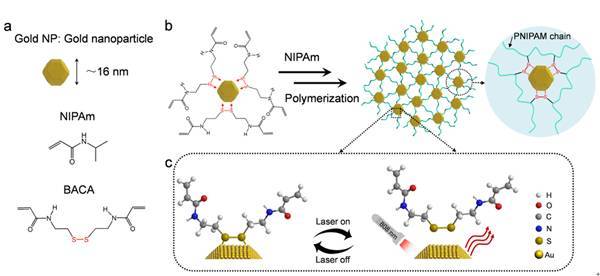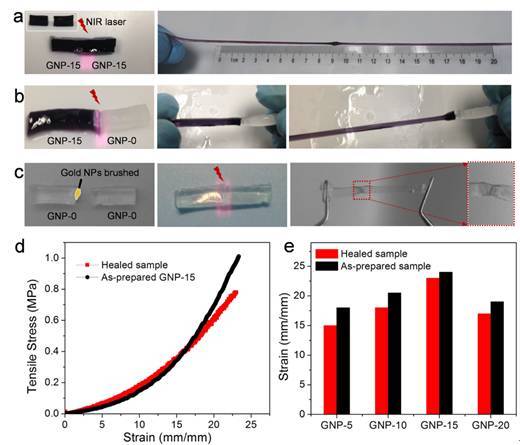智能水凝胶功能材料
智能水凝胶功能材料基本信息
| 中文名 | 智能水凝胶功能材料 | 外文名 | Smart Hydrogel Functional Materials |
|---|---|---|---|
| 作 者 | 褚良银 谢锐 | 出版社 | 化学工业出版社 |
| 页 数 | 381 页 | 开 本 | 16 开 |
| 类 型 | 科技 | 出版日期 | 2014年1月1日 |
| 语 种 | 简体中文, 英语 | 品 牌 | 化学工业出版社 |
PartⅠ Thermo.responsiveHydrogeIFunctionaIMaterials
1Structure—Function Relationship ofThermo—responsive Hydrogels
1.1Introduction
1.2Effect oflnternal Microstructure on the Equilibrium Thermo—responsive Phase Transition
1.3Effect oflnternal Microstructure on the Dynamic Thermo—responsive Phase Transition
1.4Effect of Internal Microstructure on the Thermo—responsive Controlled—Release Characteristics
1.5 Effect oflnternal Microstructure on the MechanicalStrength of Thermo—responsive Hydrogels
1.6 Summary
References
2Preparation and Properties of Monodisperse Thermo—responsive Microgels
2.1Introduction
2.2Submicron—Sized Monodisperse Thermo—responsiveCore—Shell Hydrogel Microspheres Fabricated via Surfactant—Free Emulsion Polymerization
2.2.1 Preparation of P(NIPAM—co—St) Seeds
2.2.2Preparation of Core—Shell Microsphereswith PNIPAM Shell Layers
2.2.3 Monodispersity ofCore—Shell Microsphereswith P(NIPAM—co—St) Cores and PNIPAMShell Layers
2.2.4 Thermo—responsive Characteristicsof the Core—Shell Microspheres with PNIPAM Shell Layers
2.3 Positively Thermo—responsive Submicron—SizedMonodisperse Core—Shell Hydrogel Microspheres
2.3.1Preparation ofPositively Thermo—responsive Submicron—Sized Monodisperse Core—ShellHydrogelMicrospheres
2.3.2 Morphological Analyses of the Microspheres
2.3.3 Positively Thermosensitive Swelling Characteristics
2.4 Monodisperse Thermo—responsive HydrogelMicrospheres and Microcapsules Preparedvia Membrane Emulsification
2.4.1Strategies for Preparation ofMonodisperse PNIPAM Microspheres and Microcapsules via Membrane Emulsificatio
2.4.2Morphology of Prepared MonodispersePNIPAM Microspheres
2.4.3Morphology of Prepared Monodisperse PNIPAM Microcapsules
2.4.4 Effect of Freeze—Drying and RehydratingTreatment on the Thermo—responsiveCharacteristics of PNIPAM Microspheres
2.5 Monodisperse Thermo—responsive Hydrogel Microspheres and Microcapsules Fabricated with Microfluidics
2.5.1Microfluidic Fabrication ofMonodisperseThermo—responsive Microgels with TunableVolume—PhaseTran sitionKinetics
2.5.2 FabricationofMonodisperse Thermo—responsive Microgelsin a Microfluidic Chip
2.5.3Fabrication ofMonodisperse Microspheres with PNIPAM Core and Poly(2—HydroxyethylMethacrylate) (PHEMA) She
2.6 Summary
References
3 Flow and Aggregation Characteristics of Thermo—responsive Microgels During Phase Transition
3.1 Introduction
3.2Flo and Aggregation Characteristics of Thermo—responsive Spheres During the Phase Transition
3.2.1 Preparation of Monodisperse PNIPAMHydrogel Spheres
3.2.2Thermo—responsive Volume—Phase Transition Characteristics of PNIPAM Hydrogel Spheres
3.2.3 Flow Characteristics of PNIPAM HydrogelSpheres During the Phase Transitionin a Transparent Glass Pipe
3.3Flow Characteristics of Thermo—responsiveMicrospheres in Microchannel During the Phase Transition
3.3.1 Synthesis of Microspheres in a SimpleMicrofluidic Device
3.3.2 Flow Characteristics of PNIPAMMicrospheres in Horizontal Microchannel at Low Reynolds Number of Fluid
3.3.3 Effect of the Diameter Ratio of PNIPAMMicrosphere to Microchannel on the FlowCharacteristics
3.4 Effects of Microchannel Surface Property on FlowBehaviors of Thermo—responsive Microspheres During the Phase Tran sition
3.4.1 Modification of Inner Surface of Glass Microchannel
3.4.2 Characterization of Wettability and Roughness of Modified Glass Microchannels
3.4.3 Effects of Surface Wettability and Roughnessof Microchannel on the Average Velocity of Fluid in Microchannel
3.4.4 Effect of Surface Wettability and Roughness of Microchannel on Aggregation Behaviorsof PNIPAM Microspheres During the Phase Transition
3.4.5Effect of Surface Wettability of Microchannel on Flow Characteristics of PNIPAM Microspheres
3.4.6 Effect of Surface Roughness of Microchannel on Flow Characteristics of PNIPAM Microspheres
3.4.7 Flow Behaviors of PNIPAM Microspheresin Microchannel with Hydrophobicand Rough Surface During the Phase Transition
3.5Summary
References
4Polyphenol—Induced Phase Transition of Thermoresponsive Hydrogels
4.1 Introduction
4.2Phase Transition Behaviors of PNIPAM MicrogelsInduced by Tannic Acid
4.2.1Preparationof MonodispersePNIPAM Microgels
4.2.2 Dynamic Isothermal Volume—Phase Transition of PNIPAM Microgels Induced by TA
4.2.3Equilibrium Isothermal Volume—PhaseTransition of PNIPAM Microgels Induced by TA
4.2.4Thermosensitive Phase Transition of PNIPAMMicrogels in TA Solutions
4.3 Phase Transition Behaviors of PNIPAM MicrogelsInduced by Ethyl Gallate
4.3.1 Preparation of PNIPAM Microspheres and Core—Shell PNIPAM Microcapsules
4.3.2 Thermo—responsive Phase Transition Behaviors of PNIPAM Microspheres in EG Solution
4.3.3The Intact—to—Broken TransformationBehaviors of Core—Shell PNIPAM Microcapsules in Aqueous Solutionwith Varying EG Concentration
4.4 Summary
References
5 Functional Membranes with Thermo—responsive Hydrogel Gates
5.1Introduction
5.2Functional Membranes with Thermo—responsive Hydrogel Gates Fabricated by Plasma—InducedPore—Filling Graft Polymerizatio
5.2.1Regulation of Response Temperatureof Thermo—responsive Membranes
5.2.2 Effect of Grafting Degree on the Thermo—responsive Gating Characteristics
5.2.3Gating Characteristics of Thermo—responsiveMembranes with Grafted Linearand Cross—linked Hydrogel Gates
5.2.4Membranes with NegativelyThermo—responsive Hydrogel Gates
5.2.5 Composite Thermo—responsive Membrane System
5.2.6Thermo—responsive Affinity Membrane
5.3Functional Membranes with Thermo—responsive Hydrogel Gates Fabricated by Atom—Transfer Radical Polymerization
5.4Functional Membranes with Thermo—responsive Hydrogel Gates Fabricated by Free—Radical Polymerization
5.5Summary
References
6Functional Microcapsules with Thermo—responsiveHydrogel Shells
6.1 Introduction
6.2 Functional Microcapsules with GraftedThermo—responsive Hydrogel Chains in the Porous Membranes as Gates
6.3 Functional Microcapsules with Thermo—responsiveMicrogels in the Membranes as Gates
6.4Functional Microcapsules with Thermo—responsiveCross—linked Hydrogels as Membranes
6,5Summary
References
……
PartⅡ pH—Responsive Hydrogel Functional Materials
PartⅢThermo—/pH—Dual—Responsive HydrogelFunctional Materials
PartⅣAlcohol—Responsive Hydrogel Functional Materials
PartⅤ Glucose—Responsive Hydrogel Functional Materials
PartⅥ Ion—Recognizable Hydrogel Functional Materials
PartⅦ Molecular—Recogruzable Hydrogel Functional Materials
Index
智能水凝胶功能材料造价信息
《智能水凝胶功能材料(英文)》可供化学、化工、材料、生物、医药等领域科技人员阅读、参考。
智能水凝胶功能材料常见问题
-
是2011年新开设的本科专业,区别于传统的材料科学与工程,这个专业更倾向于功能材料的开发与应用。不细分金属、非金属、陶瓷什么的。三个方向都要学。前景不错,现状一般。
-
功能材料属于工科专业。本专业是材料学、生物学和医学等学科领域的跨学科专业,主干学科有高分子材料科学与工程、生物医学工程。主要从事生物材料和生物医学工程方面的教学与科研工作。中文名:功能材料专业,外文名...
-
我的房子是小户型的,我是觉得浴帘很不错的,用起来也是比较方便,而且还可以起到装饰的作用。浴帘:这个是最灵活,最省钱的方案,无论是什么形状的淋浴区都可以很方便的通过安装浴帘来达到简单的干湿分区!浴帘是一...
智能水凝胶功能材料文献

 组织工程用水凝胶材料
组织工程用水凝胶材料
综述了目前用于组织工程支架材料的水凝胶,包括胶原和明胶、透明质酸盐、海藻酸盐、琼脂糖和壳 聚糖等天然水凝胶,聚丙烯酸及其衍生物、聚氧化乙烯及其衍生共聚物、聚乙烯醇、聚磷腈和合成多肽等合成 水凝胶,并介绍了可注射性组织工程水凝胶。

 美研制出廉价环保的新型水凝胶材料
美研制出廉价环保的新型水凝胶材料
水凝胶是一种具有高保水、高吸水特性的软材料,用于尿不湿、隐形眼镜制造等多个领域,但造价较高、伸缩性较差、对人体和环境有毒害等因素限制了水凝胶的商业应用。美国研究人员日前宣布,他们发明了一种用天然材料制造水凝胶的新工艺,所制备的水凝胶廉价、安全、伸缩性充分,可在食品加工、灭火等方面有新的应用。

近日,合肥工业大学化学与化工学院“黄山青年学者”从怀萍教授课题组与中国科学技术大学、德国马普学会胶体与界面研究所相关研究组合作,成功设计并研发了可快速高效自修复的高性能仿生智能纳米复合水凝胶,具有多功能、优异机械性能等特性,应用前景广阔。相关成果以《基于动态金-硫配位键构筑高强度,快速高效自修复纳米复合水凝胶》为题,于2017年10月12日发表在国际著名出版社--细胞出版社新推出的综合性化学期刊《化学》上(Chem 2017, 3(4), 691-705),论文的共同第一作者是青年教师秦海利博士和硕士研究生张坦。

生物组织受到外界损伤时会通过细胞或组织的自我修复从而恢复其本来的功能和结构。作为一种质地柔软且高含水性材料,水凝胶广泛应用于传感与检测、药物释放、驱动器及组织工程等多个领域,具有自修复性能不仅可延长其使用寿命,同时可大幅提升使用安全性。目前采取的在凝胶网络内部结构中引入修复剂、动态或可逆的共价或非共价作用力等弱相互作用力的方法合成的水凝胶材料,即使在热、酸等外界刺激辅助下,自修复过程往往需要数小时甚至24小时以上。同时,为实现自修复在网络结构中引入弱相互作用力常常会伴随着材料机械性能的降低影响其使用效果。

我校化学与化工学院从怀萍教授课题组与中国科学技术大学、德国马普学会胶体与界面研究所相关研究组合作,提出了纳米复合水凝胶与配位键相结合构筑高性能材料的新策略。科研人员将单分散的金纳米颗粒作为水凝胶三维网络结构的交联剂,通过金-硫配位键使聚合物链与金纳米颗粒相连,利用金纳米颗粒优异的光热性能和配位键在高温下的动态不稳定性,成功实现了纳米复合水凝胶自修复性能的大幅提升。此外,材料中金纳米颗粒表面的大量未饱和金原子提供的大量交联位点,大幅提高了凝胶网络的支化度,使该材料具有非常优异的机械性能。
实验结果表明,在波长808纳米的近红外光诱导下,该新型材料在1分钟内即可实现96%的自修复。同时,该课题组对凝胶的生物安全性评估结果表明,该材料具有良好的可注射性能及生物相容性,可作为药物载体负载抗癌药物在近红外光下进行可控释放。

该工作得到了国家自然科学基金面上和重点项目,国家重点基础研究发展计划,新世纪优秀人才支持计划,中央高校基本科研业务费专项资金,合肥大科学中心卓越用户基金的资助。


合肥工业大学
来源 | 新闻文化网
微信编辑 | 李文浩
爱工大,从点赞,转发开始~
水凝胶材料的结构可以描述为聚合物的“晾衣绳”。在这个比喻中,水凝胶是由长长的的线条(即上文提到的“晾衣绳”)组成的,从而使得不同种类的化学基团能够悬浮起来(也就是像“晾衣绳”那样晾在空中)。
作为一种高吸水高保水材料,水凝胶被广泛用于多种领域,如:干旱地区的抗旱,在化妆品中的面膜、退热贴、镇痛贴、 农用薄膜、建筑中的结露防止剂、调湿剂、石油化工中的堵水调剂,原油或成品油的脱水,在矿业中的抑尘剂,食品中的保鲜剂、增稠剂,医疗中的药物载体等等。值得注意的是,不同的应用领域应该选用不同的高分子原料,以满足不同的需求。
- 相关百科
- 相关知识
- 相关专栏
- 智能测控仪表
- 智能现磨自动售卖咖啡机
- 智能电力逆变电源系统
- 智能电子产品设计与制作
- 智能电网技术:面向供需互动能量优化
- 智能电网知识处理模型与可视化方法
- 智能电网通信及组网技术
- 智能电脉冲抗渗防霉系统技术规程
- 智能电视——重塑第一屏
- 智能电视开机广告服务规范
- 智能电视系统
- 智能白度仪
- 智能直线电机(大连)有限公司
- 智能相机
- 智能硬件轻量级操作系统规范软硬件适配
- 智能管理会计:全面赋能业财融合的实战指南
- 支持并行工程和智能CAPP的制造资源建模技术
- 智能建筑工程报警与电视监控系统前端设备的安装施工
- 智能磨音频谱分析仪(DF-6811A)使用说明书
- 智能建筑工程设计中的机电设备集成配置系统总体设计
- 智能化技术在电气工程自动化控制中的应用与实践研讨
- 智能电力监控管理系统在某飞机维修公司工程中的应用
- 智能建筑智能化工程名词解释-通信系统设备安装工程
- 智能小区以太接入交换机SNMP代理设计与实现
- 智能建筑虚拟仪器监控系统与控制网络的接口技术
- 智能微电网集成关键技术研发及其产业化项目通过验收
- 智能照明系统在高校教学楼建筑节能改造中的应用
- 智能社区路灯及景观灯监控系统方案V2-BAIDU
- 智能建筑综合能耗分析评估系统之管理平台设计与应用
- 中国信达施工现场智能化管理及视频监控系统设计方案
- 政府投资项目如何做好智能化系统工程建设的过程控制
- 以S3C2410为核心的简易智能家居监控系统设计